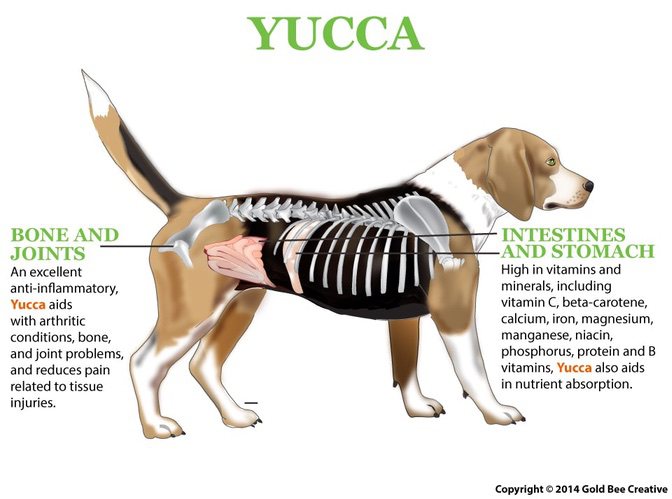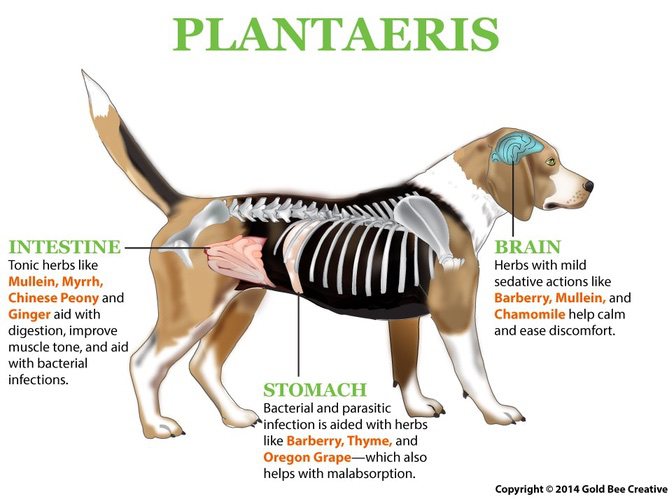liver support

free shipping over $100 (USA & Canada)
1-877-937-4372 the pet expert hotline

Copper Storage Disease in dogs leads to significant liver concerns in our beloved animal companions. This condition, also referred to as Copper-Associated Hepatitis (CAH), involves the accumulation of the mineral in question within the liver cells, instigating oxidative damage and inflammation, which can potentially contribute to the development of several conditions. So, although CAH may be unfamiliar to many pet parents, it is a health concern that warrants our attention and understanding.
The well-being of your cherished furry family member hinges on understanding the potential causes, recognizing clinical manifestations, and appreciating the diagnostic and therapeutic approaches available to support their liver from conditions like Copper Storage Disease in dogs. By embarking on this journey, you are taking the first step towards ensuring your pet receives the exceptional care they deserve.
Our furry friends get trace amounts of copper through their diet and water. This mineral is absorbed in the intestines, transported to the bloodstream, stored in the liver, and released to other body tissues. In a healthy dog, the portion that is not absorbed is eliminated by the feces. In cases of dogs with Copper-Associated Hepatitis, the mineral gradually accumulates in the pet’s liver.
Science has yet to determine the root cause behind this copper accumulation in the liver in many cases. However, high copper intake from an imbalanced diet can contribute to this issue.
A lot of data also points to a possible genetic predisposition to copper storage disease in dogs of certain breeds. In these cases, the dogs have an inherent defect within their copper metabolism process.
Notably, age and gender are also potential contributors to a higher tendency of developing CAH, with a notable proclivity observed in female Labrador Retrievers and Dobermans, for example.
Copper Storage Disease can cause different symptoms in pets. Affected dogs may exhibit a loss of appetite and persistent low energy. Gastrointestinal disturbances are also common, including symptoms like vomiting, diarrhea, and, in more severe instances, bloody stools. Physical indications of the disease can manifest as icterus (when you notice your little one turning a bit yellow) or abdominal swelling (ascites).
Moreover, increased water consumption (polydipsia) and more frequent urination (polyuria) may be observed in some cases. Neurological signs, indicated by alterations in gait and movement in your little one, can also become apparent.
The vet will likely request blood and urine tests at the first signs that something might be wrong with your dog. In the case of CAH, results usually show signs of liver issues. X-rays and ultrasounds may then be taken to check for visual alterations of the organ, like enlargement, and eliminate other possible underlying conditions. A conclusive diagnosis of Copper Storage Disease in dogs can only be made with a biopsy of the organ, a procedure that entails the extraction of a tiny liver tissue sample for microscopic examination.

Treatment focuses on helping support the liver function and preventing complications that could affect their quality of life. Therapeutic options include:
NHV Milk Thistle extract decreases damage to the liver and helps prevent toxins from binding to the organ. In addition, this vet-formulated supplement plays a pivotal role in detoxification processes and offers anti-inflammatory and antioxidant properties to your sick pup.
NHV Turmeric, considered hepatoprotective, is another indispensable herbal extract as it helps promote liver detoxification and is a potent anti-inflammatory.
Lastly, NHV Yucca may aid in relieving inflammation and discomfort, while NHV Plantaeris helps manage episodes of diarrhea that CAH might cause.
liver support

Milk Thistle & Turmeric
bundle and save with pet expert kits
3 month supply for a small to medium size pet
Improve your pet's liver and kidney function with all-natural supplements formulated to ease symptoms, support your cat or dog’s recovery from liver problems, and help improve their overall health.


Improve your pet's liver and kidney function with all-natural supplements formulated to ease symptoms, support your cat or dog’s recovery from liver problems, and help improve their overall health.

Support Your Pet’s Liver
A gentle liver detox will help pets with nearly any condition, and even pets who are generally healthy will benefit. This kit provides natural liver and kidney support while fortifying pets against chronic inflammation and improving their overall wellbeing.
Think of the liver as the main filter for the body. It helps remove toxins and is essential to your pet’s life. It processes everything a pet may eat, metabolizes medications your pet may take, helps regulate hormones, and so much more.
How NHV Remedies Support Cats and Dogs with Liver Problems
Milk Thistle and Turmeric work together in this support kit to provide a host of remarkable benefits. These herbs contain powerful natural compounds that help to prevent damage to the liver and aid in liver regeneration.
This kit was formulated by a veterinarian and master herbalist with 20+ years of experience supporting pets. Since then, it has been enjoyed by pets across the world. Here at NHV, we’ve dedicated our careers to the health of pets everywhere. We hope that when you feed your pets these powerful supplements, that you’ll see the love we have for them.
MILK THISTLE
Milk thistle is a well-known and effective natural herb that detoxifies and fortifies the liver. It has been used by humans for this purpose for thousands of years and has no equivalent in modern medicine. Milk thistle helps humans, cats, and dogs with liver problems.
TURMERIC
Turmeric is a herb, also used as a spice, that offers many health benefits including anti-inflammatory, antioxidant, antifungal, antibacterial, anticoagulant, antiseptic, and astringent properties that will help support cats and dogs with liver problems.
Additional Support
If your dog or cat shows signs of liver problems, start with a trip to your local vet. They’ll look into the issue and prescribe a treatment plan. To give them the most comprehensive support, consider adding these all-natural supplements by NHV.
Order here with us online or call 1-877-937-4372 to connect with a professional on our pet expert hotline.
Select your pet's weight to determine the correct dose.
To be taken twice daily. Determine your pet’s weight and then use the easy chart below to determine the correct dose. This is the minimum dosage.
Pet's Weight Dosage
0 - 15 lb = 0.5 ml
16 - 30 lb = 1.0 ml
31 - 45 lb = 1.5 ml
46 - 60 lb = 2.0 ml
61 - 75 lb = 2.5 ml
Over 75 lb = 3.0 ml
For small animals (rabbits, ferrets), avians and reptiles use 1 drop for every 2 lb of body weight.
How to Administer
Shake well before use. The easiest method is to use the dropper provided and place the drops into your pet’s food or favorite treat. You can also use the dropper and squirt directly into the pet’s mouth. Some pets can be finicky, if this occurs consider hiding the drops in foods most pet’s love such as fish, chicken or yogurt or a favorite treat. If your pet only eats dry food then soak a few kibbles at feeding time.
For Best Results
Herbal dietary supplements are beneficial to the health and well-being of your pet and are safe for long-term use. Every pet responds to natural herbal supplements differently, therefore it is important to be consistent and administer the product daily. Supplements generally take two to four weeks to take effect, however this will vary from one animal to the next.
Product Storage
All NHV Natural Pet Products are pure herbal extracts and contain no artificial additives, preservatives or coloring. Shelf life after opening is 6 months and must be refrigerated after opening.
Cautions and Contraindications
Do not use in pregnant or nursing animals.
All information provided by NHV Natural Pet Products is for educational purposes only.
Support Your Pet’s Liver
A gentle liver detox will help pets with nearly any condition, and even pets who are generally healthy will benefit. This kit provides natural liver and kidney support while fortifying pets against chronic inflammation and improving their overall wellbeing.
Think of the liver as the main filter for the body. It helps remove toxins and is essential to your pet’s life. It processes everything a pet may eat, metabolizes medications your pet may take, helps regulate hormones, and so much more.
How NHV Remedies Support Cats and Dogs with Liver Problems
Milk Thistle and Turmeric work together in this support kit to provide a host of remarkable benefits. These herbs contain powerful natural compounds that help to prevent damage to the liver and aid in liver regeneration.
This kit was formulated by a veterinarian and master herbalist with 20+ years of experience supporting pets. Since then, it has been enjoyed by pets across the world. Here at NHV, we’ve dedicated our careers to the health of pets everywhere. We hope that when you feed your pets these powerful supplements, that you’ll see the love we have for them.
MILK THISTLE
Milk thistle is a well-known and effective natural herb that detoxifies and fortifies the liver. It has been used by humans for this purpose for thousands of years and has no equivalent in modern medicine. Milk thistle helps humans, cats, and dogs with liver problems.
TURMERIC
Turmeric is a herb, also used as a spice, that offers many health benefits including anti-inflammatory, antioxidant, antifungal, antibacterial, anticoagulant, antiseptic, and astringent properties that will help support cats and dogs with liver problems.
Additional Support
If your dog or cat shows signs of liver problems, start with a trip to your local vet. They’ll look into the issue and prescribe a treatment plan. To give them the most comprehensive support, consider adding these all-natural supplements by NHV.
Order here with us online or call 1-877-937-4372 to connect with a professional on our pet expert hotline.
Select your pet's weight to determine the correct dose.
To be taken twice daily. Determine your pet’s weight and then use the easy chart below to determine the correct dose. This is the minimum dosage.
Pet's Weight Dosage
0 - 15 lb = 0.5 ml
16 - 30 lb = 1.0 ml
31 - 45 lb = 1.5 ml
46 - 60 lb = 2.0 ml
61 - 75 lb = 2.5 ml
Over 75 lb = 3.0 ml
For small animals (rabbits, ferrets), avians and reptiles use 1 drop for every 2 lb of body weight.
How to Administer
Shake well before use. The easiest method is to use the dropper provided and place the drops into your pet’s food or favorite treat. You can also use the dropper and squirt directly into the pet’s mouth. Some pets can be finicky, if this occurs consider hiding the drops in foods most pet’s love such as fish, chicken or yogurt or a favorite treat. If your pet only eats dry food then soak a few kibbles at feeding time.
For Best Results
Herbal dietary supplements are beneficial to the health and well-being of your pet and are safe for long-term use. Every pet responds to natural herbal supplements differently, therefore it is important to be consistent and administer the product daily. Supplements generally take two to four weeks to take effect, however this will vary from one animal to the next.
Product Storage
All NHV Natural Pet Products are pure herbal extracts and contain no artificial additives, preservatives or coloring. Shelf life after opening is 6 months and must be refrigerated after opening.
Cautions and Contraindications
Do not use in pregnant or nursing animals.
All information provided by NHV Natural Pet Products is for educational purposes only.
discomfort support

Discomfort Relief, Digestive Support, and Dog Appetite Booster
buy 2 and save $3
3 month supply for a small to medium size
Yucca for dogs is an all-natural supplement that can be helpful in many circumstances by providing symptom relief related to inflammation, discomfort, and loss of appetite.


Yucca for dogs is an all-natural supplement that can be helpful in many circumstances by providing symptom relief related to inflammation, discomfort, and loss of appetite.

Yucca root is widely used in dog food as well as in other pet foods. It is an herb that is highly nutritive as it is rich in vitamin C, beta-carotene, B vitamins, magnesium, iron, calcium, manganese, protein, niacin, and phosphorus. Yucca contains two very beneficial compounds: sarsasapogenin and smilagenin. These two compounds work on the mucous membranes of the small intestine. These compounds help with the penetration and absorption of minerals and vitamins. Sarsasapogenin and Smilagenin are known as steroidal saponins (phytosterols), which act as precursors to corticosteroids produced naturally by the body.
Steroidal-saponins support the immune function of the body while stimulating and supporting the production of its own corticosteroids and corticosteroid–related hormones. Due to this action, studies conducted on yucca have shown that it may be beneficial and effective for discomfort and inflammation in conditions such as arthritis. Yucca may also be effective as an appetite booster in dogs and may also help reduce the production of urease, which contributes to the unpleasant odors of urine and feces in some dogs.

Yucca for dogs is commonly used for supporting arthritis, as an anti-inflammatory, nutritive, antitumor, and digestive. Yucca for dogs is considered a nutritive herb because it is rich in vitamins and minerals like vitamin C, beta-carotene, B vitamins, magnesium, iron, calcium, manganese, protein, niacin, and phosphorus.

Select your pet's weight to determine the correct dose.
To be taken twice daily. Determine your pet’s weight and then use the easy chart below to determine the correct dose. This is the minimum dosage.
Pet's Weight Dosage
0 - 15 lb = 0.5 ml
16 - 30 lb = 1.0 ml
31 - 45 lb = 1.5 ml
46 - 60 lb = 2.0 ml
61 - 75 lb = 2.5 ml
Over 75 lb = 3.0 ml
How to Administer: Shake well before use. The easiest method is to use the dropper provided and place the drops into your pet’s food or favorite treat. You can also use the dropper and squirt directly into the pet’s mouth. Some pets can be finicky, if this occurs consider hiding the drops in foods most pet’s love such as fish, chicken or yogurt or a favorite treat. If your pet only eats dry food then soak a few kibbles at feeding time.
For Best Results: Herbal dietary supplements are beneficial to the health and well-being of your pet and are safe for long-term use. Every pet responds to natural herbal supplements differently, therefore it is important to be consistent and administer the product daily. Supplements generally take two to four weeks to take effect, however this will vary from one animal to the next.
Product Storage: All NHV Natural Pet Products are pure herbal extracts and contain no artificial additives, preservatives or coloring. Shelf life after opening is 6 months and must be refrigerated after opening.
Cautions and Contraindications: Do not use Yucca in pregnant or nursing animals. Speak to your vet before using our products. A second visit is recommended if your pet’s condition does not improve, or deteriorates after continued use of the supplements. All information provided by NHV Natural Pet Products is for educational purposes only.
Yucca root is widely used in dog food as well as in other pet foods. It is an herb that is highly nutritive as it is rich in vitamin C, beta-carotene, B vitamins, magnesium, iron, calcium, manganese, protein, niacin, and phosphorus. Yucca contains two very beneficial compounds: sarsasapogenin and smilagenin. These two compounds work on the mucous membranes of the small intestine. These compounds help with the penetration and absorption of minerals and vitamins. Sarsasapogenin and Smilagenin are known as steroidal saponins (phytosterols), which act as precursors to corticosteroids produced naturally by the body.
Steroidal-saponins support the immune function of the body while stimulating and supporting the production of its own corticosteroids and corticosteroid–related hormones. Due to this action, studies conducted on yucca have shown that it may be beneficial and effective for discomfort and inflammation in conditions such as arthritis. Yucca may also be effective as an appetite booster in dogs and may also help reduce the production of urease, which contributes to the unpleasant odors of urine and feces in some dogs.

Yucca for dogs is commonly used for supporting arthritis, as an anti-inflammatory, nutritive, antitumor, and digestive. Yucca for dogs is considered a nutritive herb because it is rich in vitamins and minerals like vitamin C, beta-carotene, B vitamins, magnesium, iron, calcium, manganese, protein, niacin, and phosphorus.

Select your pet's weight to determine the correct dose.
To be taken twice daily. Determine your pet’s weight and then use the easy chart below to determine the correct dose. This is the minimum dosage.
Pet's Weight Dosage
0 - 15 lb = 0.5 ml
16 - 30 lb = 1.0 ml
31 - 45 lb = 1.5 ml
46 - 60 lb = 2.0 ml
61 - 75 lb = 2.5 ml
Over 75 lb = 3.0 ml
How to Administer: Shake well before use. The easiest method is to use the dropper provided and place the drops into your pet’s food or favorite treat. You can also use the dropper and squirt directly into the pet’s mouth. Some pets can be finicky, if this occurs consider hiding the drops in foods most pet’s love such as fish, chicken or yogurt or a favorite treat. If your pet only eats dry food then soak a few kibbles at feeding time.
For Best Results: Herbal dietary supplements are beneficial to the health and well-being of your pet and are safe for long-term use. Every pet responds to natural herbal supplements differently, therefore it is important to be consistent and administer the product daily. Supplements generally take two to four weeks to take effect, however this will vary from one animal to the next.
Product Storage: All NHV Natural Pet Products are pure herbal extracts and contain no artificial additives, preservatives or coloring. Shelf life after opening is 6 months and must be refrigerated after opening.
Cautions and Contraindications: Do not use Yucca in pregnant or nursing animals. Speak to your vet before using our products. A second visit is recommended if your pet’s condition does not improve, or deteriorates after continued use of the supplements. All information provided by NHV Natural Pet Products is for educational purposes only.
diarrhea support

Natural Relief for Diarrhea and Inflammatory Bowel Disease (IBD)
buy 2 and save $3
3 month supply for a small to medium size pet
Plantaeris is a natural dog diarrhea remedy that works quickly and gently to support the relief of digestive disorders and the associated symptoms.


Plantaeris is a natural dog diarrhea remedy that works quickly and gently to support the relief of digestive disorders and the associated symptoms.

Reduce intestinal upset and diarrhea with Plantaeris, a fast-acting, gentle, herbal, natural dog diarrhea remedy that will help your pet feel better in no time. Plantaeris is designed to help reduce symptoms of diarrhea.
Diarrhea is a symptom of digestive disorders. In dogs, it can be caused by inflammatory bowel disease, food allergies, or parasites such as giardia. Help your pet with Plantaeris dog diarrhea supplement and ensure they have plenty of fluids to prevent dehydration.

Barberry – Treats inflammation and infections.
Mullein – Soothes and lubricates the tissues of the GI tract.
Bayberry – Contains tannins, resins, and gums that control bacterial infection.
Myrrh – Relieves spasms, inflammation, and digestive discomfort.
Thyme – Improves digestion and relaxes GI spasms.
Chamomile – Relaxes the digestive system.
Chinese Peony – Reduces inflammation and relaxes spasms.
Ginger – Relieves discomfort and stimulates circulation.
Oregon Grape – Helps relieve indigestion and malabsorption.
Select your pet's weight to determine the correct dose.
To be taken twice daily. Determine your pet’s weight and then use the easy chart below to determine the correct dose. This is the minimum dosage.
Pet's Weight Dosage
0 - 15 lb = 0.5 ml
16 - 30 lb = 1.0 ml
31 - 45 lb = 1.5 ml
46 - 60 lb = 2.0 ml
61 - 75 lb = 2.5 ml
Over 75 lb = 3.0 ml
How to Administer
Shake well before use. The easiest method is to use the dropper provide and places the drops into your pet’s food or favorite treat. You can also use the dropper and squirt directly into the pet’s mouth.
Some pets can be finicky, if this occurs consider hiding the drops in foods most pet’s love such as fish, chicken or yogurt or a favorite treat. If your pet only eats dry food then soak a few kibbles at feeding time.
For Best Results
Herbal dietary supplements are beneficial to the health and wellbeing of your pet and are safe for long-term use. Every pet responds to natural herbal supplements differently, therefore it is important to be consistent and administer the product daily. Supplements generally take two to four weeks to take effect, however this will vary from one animal to the next.
Product Storage
All NHV Natural Pet Products are pure herbal extracts and contain no artificial additives, preservatives or coloring. Shelf life after opening is 6 months and must be refrigerated after opening.
Cautions and Contraindications
Do not use Plantaeris in pregnant or nursing animals. Speak to your vet before using our products. A second visit is recommended if your pet’s condition does not improve, or deteriorates after continued use of the supplements.
All information provided by NHV Natural Pet Products is for educational purposes only.
Reduce intestinal upset and diarrhea with Plantaeris, a fast-acting, gentle, herbal, natural dog diarrhea remedy that will help your pet feel better in no time. Plantaeris is designed to help reduce symptoms of diarrhea.
Diarrhea is a symptom of digestive disorders. In dogs, it can be caused by inflammatory bowel disease, food allergies, or parasites such as giardia. Help your pet with Plantaeris dog diarrhea supplement and ensure they have plenty of fluids to prevent dehydration.

Barberry – Treats inflammation and infections.
Mullein – Soothes and lubricates the tissues of the GI tract.
Bayberry – Contains tannins, resins, and gums that control bacterial infection.
Myrrh – Relieves spasms, inflammation, and digestive discomfort.
Thyme – Improves digestion and relaxes GI spasms.
Chamomile – Relaxes the digestive system.
Chinese Peony – Reduces inflammation and relaxes spasms.
Ginger – Relieves discomfort and stimulates circulation.
Oregon Grape – Helps relieve indigestion and malabsorption.
Select your pet's weight to determine the correct dose.
To be taken twice daily. Determine your pet’s weight and then use the easy chart below to determine the correct dose. This is the minimum dosage.
Pet's Weight Dosage
0 - 15 lb = 0.5 ml
16 - 30 lb = 1.0 ml
31 - 45 lb = 1.5 ml
46 - 60 lb = 2.0 ml
61 - 75 lb = 2.5 ml
Over 75 lb = 3.0 ml
How to Administer
Shake well before use. The easiest method is to use the dropper provide and places the drops into your pet’s food or favorite treat. You can also use the dropper and squirt directly into the pet’s mouth.
Some pets can be finicky, if this occurs consider hiding the drops in foods most pet’s love such as fish, chicken or yogurt or a favorite treat. If your pet only eats dry food then soak a few kibbles at feeding time.
For Best Results
Herbal dietary supplements are beneficial to the health and wellbeing of your pet and are safe for long-term use. Every pet responds to natural herbal supplements differently, therefore it is important to be consistent and administer the product daily. Supplements generally take two to four weeks to take effect, however this will vary from one animal to the next.
Product Storage
All NHV Natural Pet Products are pure herbal extracts and contain no artificial additives, preservatives or coloring. Shelf life after opening is 6 months and must be refrigerated after opening.
Cautions and Contraindications
Do not use Plantaeris in pregnant or nursing animals. Speak to your vet before using our products. A second visit is recommended if your pet’s condition does not improve, or deteriorates after continued use of the supplements.
All information provided by NHV Natural Pet Products is for educational purposes only.